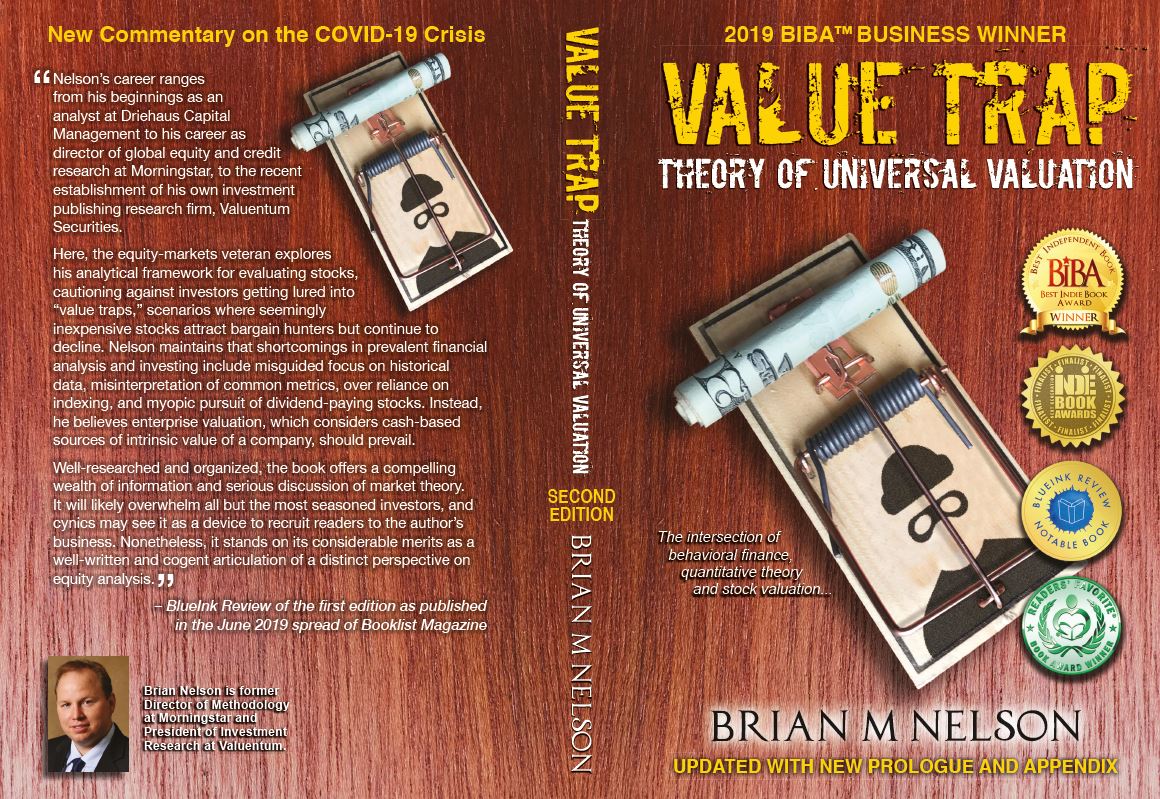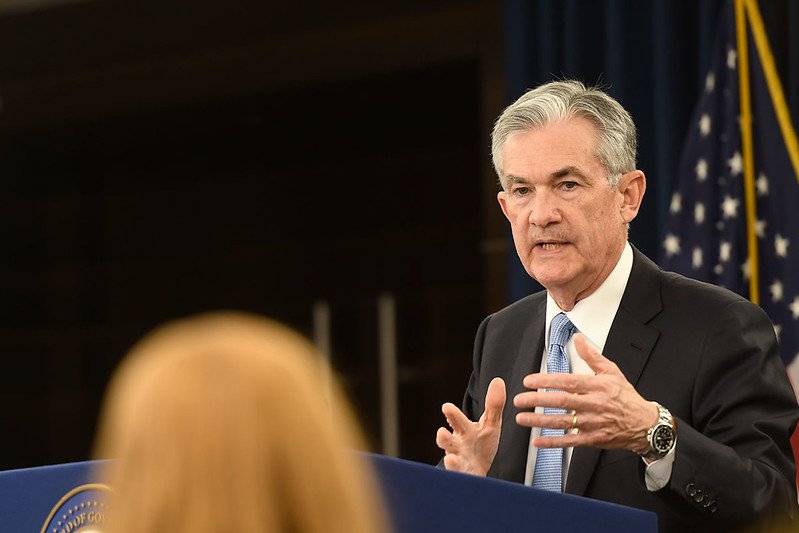Member LoginDividend CushionValue Trap |
Quick Take: Fed Raises 25 Basis Points; This Banking Crisis Is Far from Over
publication date: Mar 22, 2023
|
author/source: Brian Nelson, CFA
Image: FOMC Chairman Powell answers a reporter's question at the March 20, 2019 press conference. By Brian Nelson, CFA On March 22, 2023, the Federal Reserve raised its benchmark rate 25 basis points, to the range of 4.75%-5%, a move that we think reflects a government agency that is now more or less a deer caught in headlights--given the nascent regional banking crisis in the United States. The bottom line is that the U.S. banking system does not have enough cash on hand to redeem all deposits (it never has), and with respect to U.S. banks, deposit insurance is only up to $250,000 per depositor, per FDIC-insured bank, per ownership category. The U.S. public has grown concerned, and that may spell continued panic (and deposit flight). The bank business model is inherently flawed, in our view, necessitating outsized risk and enormous amounts of leverage. From where we stand, the U.S. banking system will likely continue to be tested until it is resolved that any deposits held at any financial institution in the U.S. are completely safe by explicit government guarantee. Without this explicit guarantee, it may mean continued deposit flight from the regional banks (KBE) (KRE) to the large money center banks (XLF) -- the Too-Big-to-Fail ("TBTF") banks -- or it could mean potentially higher deposit insurance levels that go far beyond the current $250,000 threshold, which itself was raised from $100,000 during the Great Financial Crisis in 2008 (and made permanent in 2010). One might hope that the markets can perhaps avert another all-out banking crisis if deposit insurance thresholds are raised once again, but this explicit move remains to be seen. Not Over Yet We don’t think the regional banking crisis in the U.S. is over by a longshot, and the only real move the Fed had today, in our opinion, was to continue to raise rates along its current path, hoping that all of this will just go away. However, shares of First Republic (FRC) and PacWest Bancorp (PACW) remain under tremendous pressure, and if SVB Financial’s (SIVB) situation sheds any light, it is becoming more difficult for struggling banks to raise new external capital. Several of the riskiest regional banks in the U.S. are likely close to insolvency due to ill-advised interest rate bets on long-dated Treasury securities, a situation exacerbated if one marks both available-for-sale (AFS) and held-to-maturity (HTM) loans to market. Here is what S&P (SPGI) noted several months ago in November: The Federal Deposit Insurance Corp. is becoming concerned about mounting unrealized losses in U.S. banks' bond portfolios and the possibility that those losses will have to be realized, according to the regulator's acting chairman. "Right now, our banks have strong liquidity, so they shouldn't have to dispose of those assets," Martin Gruenberg said at a Nov. 30 Senate Banking Committee hearing. "But as the market evolves and banks may have to dispose of those assets, there are substantial unrealized losses that could impact our institutions." Gruenberg, who has been nominated for the permanent chair position, labeled the increase in unrealized losses as a "very substantial" overhang for banks that could soon become "problematic." As the Federal Reserve has rapidly raised interest rates over the last year, the value of many bonds that banks own have dropped. That has led to significant unrealized losses in banks' available-for-sale securities portfolios, which have taken a chunk out of accumulated other comprehensive income, or AOCI, and driven down tangible book values. The U.S. banking industry recorded total AOCI losses of $423.58 billion during the first six months of the year, according to an August analysis by S&P Global Market Intelligence. A more recent analysis found that the 15 largest U.S. banks' AOCI losses tumbled again in the third quarter, falling $33.80 billion sequentially. In other news, Credit Suisse (CS) was recently bailed out by rival UBS Group (UBS), which may avert crisis in Europe for the time being, but while the story at Credit Suisse is moreso one of corporate governance failures over many years, “Credit Suisse Is a Case Study in Poor Governance and Why ESG Investing Matters (February 2022), the banking system in Europe may be in a similar situation with their own securities portfolios as those in the U.S., particularly as the European Central Bank continues its own aggressive rate-hiking path. Concluding Thoughts
We believe the regional banking business model in the U.S. will continue to be tested, and deposit flight may continue to flow to the larger, TBTF money-center banks if the U.S. government does not explicitly increase deposit guarantees. The regional banking crisis in the U.S. is far from over, in our view, and we continue to monitor the situation not only across the banking sector but also with respect to capital-market dependent entities. The technicals of the large money-center banks will be key to watch in the coming months as they offer a key gauge of global financial sector health. Stay tuned! NOW READ: 4 Very Good Reasons Why We Don’t Like Dividends of Banking Stocks ---------- It's Here!
The Second Edition of Value Trap! Order today!
 -----
Tickerized for stocks in the KRE. Brian Nelson owns shares in SPY, SCHG, QQQ, DIA, VOT, BITO, RSP, and IWM. Valuentum owns SPY, SCHG, QQQ, VOO, and DIA. Brian Nelson's household owns shares in HON, DIS, HAS, NKE, DIA, and RSP. Some of the other securities written about in this article may be included in Valuentum's simulated newsletter portfolios. Contact Valuentum for more information about its editorial policies. Valuentum members have access to our 16-page stock reports, Valuentum Buying Index ratings, Dividend Cushion ratios, fair value estimates and ranges, dividend reports and more. Not a member? Subscribe today. The first 14 days are free. |



0 Comments Posted Leave a comment